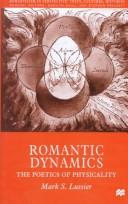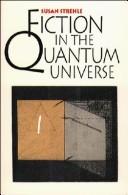| Listing 1 - 7 of 7 |
Sort by
|
Book
ISBN: 9780262345118 0262345110 9780262037556 0262037556 0262345129 Year: 2018 Publisher: Cambridge, Massachusetts : The MIT Press,
Abstract | Keywords | Export | Availability | Bookmark
 Loading...
Loading...Choose an application
- Reference Manager
- EndNote
- RefWorks (Direct export to RefWorks)
"This book looks at the use of language in science and in the circulation of scienctific concepts in society at large. More precisely, the book looks at the difficulties physicists faced regarding the use of language while creating quantum mechanics, with the use of quantum concepts in literary criticism and in literature, and with the use of these concepts by the New Age and Post New Age inclined. The principles of quantum physics--and the strange phenomena they describe--originate in and are expressed most precisely with highly abstract algebraic equations. The main challenge posed by quantum phenomena does not lie, however, in its mathematics; it lies instead in how these phenomena strain the limits of comprehension. This book explores the elusive nature of the quantum domain, its problematic relationship to representation in language, and its cultural migration over time"--

ISBN: 0333718917 Year: 2000 Publisher: London Macmillan
Abstract | Keywords | Export | Availability | Bookmark
 Loading...
Loading...Choose an application
- Reference Manager
- EndNote
- RefWorks (Direct export to RefWorks)
Book
ISBN: 9782807100640 2807100643 Year: 2015 Volume: 18 Publisher: Carnières-Morlanwelz: Lansman,
Abstract | Keywords | Export | Availability | Bookmark
 Loading...
Loading...Choose an application
- Reference Manager
- EndNote
- RefWorks (Direct export to RefWorks)
Dans la métamorphose radicale de notre rapport au monde qu'a supposée la postmodernité, la physique quantique a joué un rôle fondamental. Remettant en cause les principes de la physique classique, elle a servi de terreau fertile à l'élaboration des grandes théories du XXe siècle, modifiant profondément notre perception des phénomènes de la vie quotidienne et influençant la création et les grands courants de pensée actuels.
Book
ISBN: 1283705516 0813932874 9780813932873 9780813932859 9780813932866 0813932858 0813932866 9781283705516 Year: 2012 Publisher: Charlottesville : University of Virginia Press,
Abstract | Keywords | Export | Availability | Bookmark
 Loading...
Loading...Choose an application
- Reference Manager
- EndNote
- RefWorks (Direct export to RefWorks)
Using a new approach to literature and culture, this book aims to bridge the gap between science and the humanities by suggesting the many areas where they connect.
Quantum theory in literature. --- Postmodernism (Literature) --- Literature and science --- Physics in literature. --- American fiction --- History --- History and criticism. --- 20th century --- History and criticism --- Physics in literature --- United States --- Quantum theory in literature --- DeLillo, Don --- Pynchon, Thomas --- Didion, Joan, 1934- . A Book of Common Prayer --- O'Brien, Tim

ISBN: 0807820245 0807843652 058500370X 9780585003702 0807864889 9780807864883 9780807820247 9780807843659 9798890867032 Year: 1992 Publisher: Chapel Hill : University of North Carolina Press,
Abstract | Keywords | Export | Availability | Bookmark
 Loading...
Loading...Choose an application
- Reference Manager
- EndNote
- RefWorks (Direct export to RefWorks)
In this outstanding book Susan Strehle argues that a new fiction has developed from the influence of modern physics. The changed physical world appears in both content and form in some of the most ambitious recent fiction, which Strehle names "actualism" after the observations of Werner Heisenberg. Within that framework she explores the meditations on actuality in Pynchon, Coover, Gaddis, Barth, Atwood, and Barthelme. Although important recent narratives diverge markedly from realistic practice, this book claims that they do so in order to reflect more acutely on what we now understand as real. According to Strehle, the actualists balance attention to questions of art with an engaged meditation on the external, actual world. Reality is no longer realistic; in the new physical or quantum universe, it is discontinuous, energetic, relative, statistical, subjectively seen, and uncertainly known--all terms taken from the new physics. Actualist fiction is characterized by incompletions, indeterminacy, and "open" endings unsatisfying to the readerly wish for fulfilled promises and completed patterns. Gravity's Rainbow, for example, ends not with a period but with a dash. Realistic novels typically construct solid, believable, particularized environments, but actualist texts combine the plausible and the strange. Thus a recognizable campus like Berkeley or Cornell has a suburb called San Narciso or Zembla. Strehle makes the point that these innovations in narrative form reflect in allied ways upon twentieth-century history, politics, and science. Arguing that the perception of a changed reality reaches into philosophy, psychology, literary theory, and other areas of inquiry, the book advances a pluralistic view of the meaning of contemporary fiction. A final chapter extends the discussion beyond the North American borders to African, South American, and European texts, suggesting a global community of writers whose fiction belongs in the quantum universe.
Fysica in de literatuur --- Physics in literature --- Physique dans la littérature --- Quanta [Théorie des ] dans la littérature --- Quantum theory in literature --- Quantumtheorie in de literatuur --- American fiction --- 20th century --- History and criticism --- Literature and science --- United States --- History --- Postmodernism (Literature) --- Coover, Robert Lowell --- Gaddis, William --- Barth, John --- Physics in literature. --- Quantum theory in literature. --- English --- American Literature --- Languages & Literatures --- Literary movements --- Literature, Modern --- Poetry and science --- Science and literature --- Science and poetry --- Science and the humanities --- American literature --- History and criticism. --- Roman américain --- Postmodernisme et littérature --- Littérature et science --- 20e siècle --- Histoire et critique --- États-Unis --- Histoire
Book
ISBN: 2763735231 9782763735221 2763735223 9782763735221 9782763735238 Year: 2018 Publisher: Qubec : Presses de l'Université Laval,
Abstract | Keywords | Export | Availability | Bookmark
 Loading...
Loading...Choose an application
- Reference Manager
- EndNote
- RefWorks (Direct export to RefWorks)
Michaël La Chance nous convie, dans son essai, à un vertigineux voyage à travers les niveaux de réalité. Il explore, avec rigueur mais aussi animé par une flamme visionnaire, l’interstice entre la mécanique quantique et la poésie. Loin de superposer les notions scientifiques et esthétiques, il découvre l’infinité du sens de l’information, radicalement nouvelle, circulant dans cet espace de l’entre-deux. Michaël La Chance interroge le langage dans son adhérence à la réalité et au réel. Son essai a la densité dramatique d’une pièce de théâtre où se croisent Borges et Heisenberg, Mallarmé et Giordano Bruno, Roberto Juarroz et Niels Bohr, Fernando Pessoa et David Bohm, Ezra Pound et Stephen Hawking. Au fond, Michaël La Chance nous convie au spectacle inouï de la beauté poétique du monde. Il illustre ainsi d’une manière brillante la vérité axiomatique énoncée par Heisenberg : « toute philosophie authentique se tient […] au seuil entre la science et la poésie ». Basarab Nicolescu
Quantum theory in literature. --- Poetry --- Poetics. --- Literature and science. --- Themes, motives. --- Bruno, Giordano, --- Poetry and science --- Science and literature --- Science and poetry --- Science and the humanities --- Technique --- Subjects --- History and criticism --- Giordano, Bruno --- Brono, G'yordano, --- Brouno, Tziorntano, --- Bruno, Dzhordano, --- Bruno, Filippo, --- Bruno, G'yordano, --- Brunus Nolanus, Jordanus, --- Bulunuo, --- Nolanus, Jordanus Brunus, --- Bruno, --- Pu-lu-no, --- Pu-lu-no, Chʻiao-erh-tan-no, --- ברונו, ג׳ורדאנו, --- ברונו, ג׳ורדנו --- ברונו, ג׳יורדנו
Book
ISBN: 1009082507 1009085077 1316514072 1009084879 Year: 2022 Publisher: Cambridge : Cambridge University Press,
Abstract | Keywords | Export | Availability | Bookmark
 Loading...
Loading...Choose an application
- Reference Manager
- EndNote
- RefWorks (Direct export to RefWorks)
This book offers an extensive analysis of Woolf's engagement with science. It demonstrates that science is integral to the construction of identity in Woolf's novels of the 1930s and 1940s, and identifies a little-explored source for Woolf's scientific knowledge: BBC scientific radio broadcasts. By analyzing this unstudied primary material, it traces the application of scientific concepts to questions of identity and highlights a single concept that is shared across multiple disciplines in the modernist period: the idea that modern science undermined individualized conceptions of the self. It broadens our understanding of the relationship between modernism and radio, modernism and science, and demonstrates the importance of science to Woolf's later novels.
English literature --- Science in literature. --- Physics in literature. --- Quantum theory in literature. --- Radio in literature. --- Identity (Psychology) in literature. --- Literature and science --- History and criticism. --- Women authors --- Woolf, Virginia, --- Criticism and interpretation. --- Poetry and science --- Science and literature --- Science and poetry --- Science and the humanities --- Woolf, Virginia --- Woolf, Virginia Stephen, --- Stephen, Virginia, --- Ulf, Virzhinii︠a︡, --- Ṿolf, Ṿirg'inyah, --- Vulf, Virdzhinii︠a︡, --- Вулф, Вирджиния, --- וולף, וירג׳יניה --- וולף, וירג׳יניה, --- Stephen, Adeline Virginia,
| Listing 1 - 7 of 7 |
Sort by
|

 Search
Search Feedback
Feedback About UniCat
About UniCat  Help
Help News
News